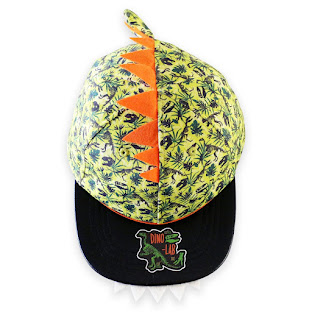10 Things You Didn’t Know About Sunscreen – Is It Really Safe?
Nobody likes to listen, but when it comes to sunny weather, there are major chances that you do it wrong.
Almost 5 million Americans are diagnosed with leukemia (type of cancer) each year, making it the most common form of cancer today, according to the American Cancer Society (ACS). Your skin is the largest part of the body and is often exposed to ultraviolet (UV) rays, which are known to cause cancer, but most of the damage can be prevented with radiation if we use a good sunscreen.
After researching all the authentic facts from ACS, Food and Drug Administration (FDA), Centers for Disease Control and Prevention (CDC), and Skin Cancer Foundation (SCF), we are sharing some important facts that you don’t know about sunscreens and kids cap, but you should know.
Here are 10 things you might be surprised to know about sunscreen:
1. You May Not Have Enough Sunscreen –
Mineral sunscreens like zinc oxide and titanium dioxide usually look thicker, so people often think they get enough to fill when they don’t. Be very careful when applying sunscreen today to make sure you are properly covered. The skin cancer perspective says 1 ounce (from your vial) every two hours. You should drain half a bottle for a long day at the beach.
2. Monitor for Oxybenzone –
It’s ultraviolet light that uses a variety of sunscreens, but it also affects hormones and causes allergies, Lunder says. The EWG found it in 70 percent of the non-mineral sunscreens measured this year. You may want to reach for a sunscreen with zinc oxide and titanium dioxide (both minerals), which are considered to be better sunscreen ingredients.
3. High SPFs (Over 50) are Completely Unreliable –
Many of the analysts agree that these products don’t seem to have better sun protection, so unknowingly people aren’t doing anything, but roasting themself. This year, the EWG found 61 products claiming an SPF of 70 or higher, and 15 were listed as over 100. Although the FDA said they “do not have enough data to label these products with an SPF above 50, provide additional protection.” For now, stick to one with the SPF between 30-50 ranges.
4. Sunscreen Can Be Applied More Easily But is Thicker –
It is rarely possible to apply a thick layer or thick enough sunscreen to the skin to adequately protect it from the sun. In addition, the unhealthy ingredients and chemicals that “pose a danger”.
5. Stay Away From Vitamin A (Retinyl Palmitate) in Your Sunscreen –
Many sunscreens use vitamin A, which is an antioxidant with anti-aging properties in cosmetic products and many face creams. However, according to several public studies, vitamins don’t interact well with sunlight and can lead to the development of cancerous cells or tumors. The ingredients are also called retinol, retinyl palmitate, retinyl acetate, or retinyl linoleate.
6. Never Use Expired Sunscreen –
Hi, the Expiry date on your sunscreens is very important. Sunscreens usually last two years without opening, but once the lid is broken, then you can either use it or lose it. Also, storing it in your car (AKA sauna) can speed up the aggregation and disassembly process, which can make it useless.
7. Your Sunscreen Should Protect You from UVA Rays –
Many sunscreens only provide UVB protection because these rays cause burns. But your sunscreen should also help to prevent bad UVA rays. These do not burn the skin. They go right through it (and the BTW glass) where they operate stealthily and damaging, deep into your dermis. This is where your new cells are formed along with elastin and collagen. As a result, Sunspots, wrinkles, lack of firmness, etc. – at an unspecified time. Ingredients like zinc oxide and titanium dioxide help protect against UVA and UVB rays. Avobenzone and Mexoryl also provide UVA protection according to some skincare experts.
8. Sunscreens that describe themselves as “sporty” or “water repellent” can be misleading –
The FDA doesn’t allow companies to label their sunscreens as “waterproof” or “sweat resistant,” so companies are considering creative ways to introduce them. If they use the terms “waterproof, companies have to indicate whether it’s 40 or 80 minutes. However, it’s nearly impossible to measure their accuracy.
9. Not Providing Enough Protection –
Most moisturizers have lower UV protection. And according to experts, the SPF protection in the moisturizer doesn’t last all day, so be sure to use real sunscreen if you’re in the sun.
10. Only Sunscreen Is Not Enough –
It Is a Bad Idea To Use Sunscreen Only To Prevent Skin Damage. Unfortunately, this is not the case. There is no evidence, expert says, and melanoma has increased threefold in the past 35 years. Using sun-protecting clothes and UVA-Protection hats is a great way to fully protect yourself from sun UV-rays & skin-related issues.
These are some important facts that everyone should know about sunscreens and sun protection. If you are looking for cool hats for your kids that can save them from sun rays & looks good as well, then check out the best collection of UV-protection hats here.


Comments
Post a Comment